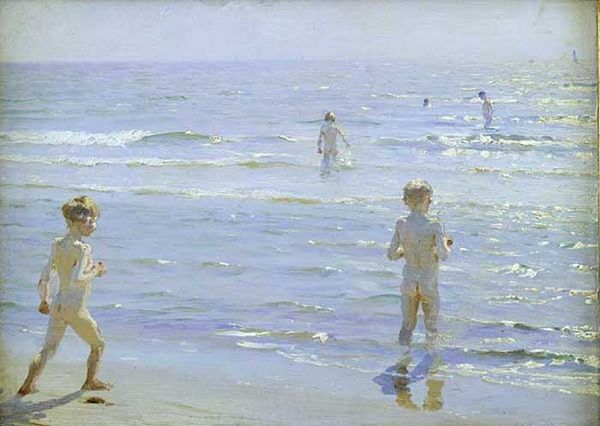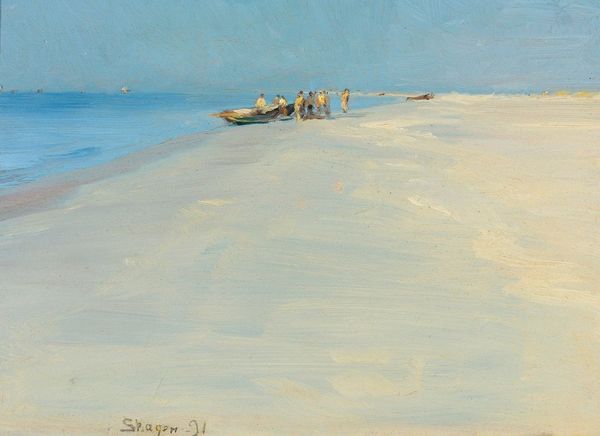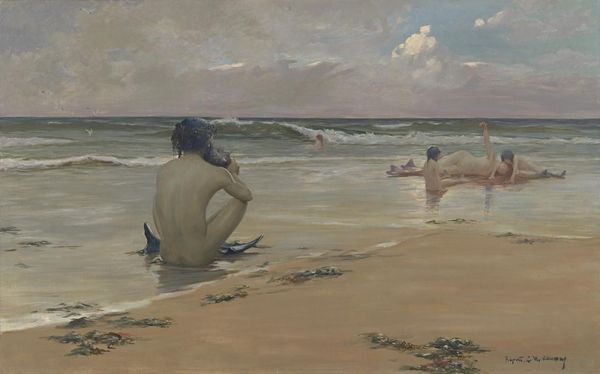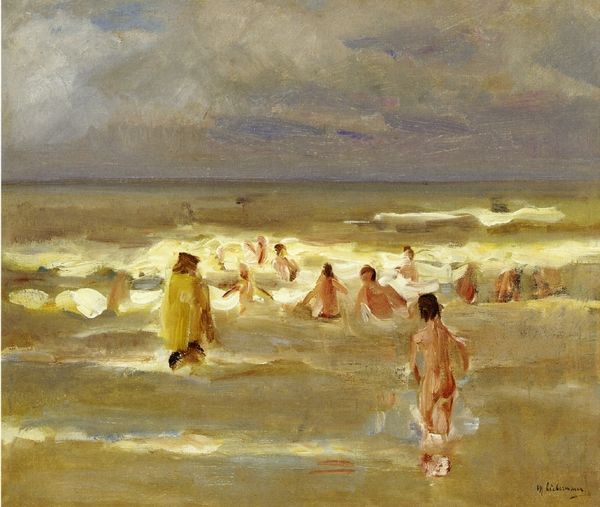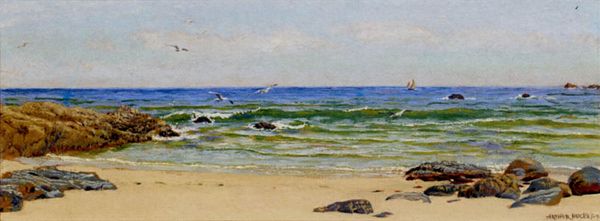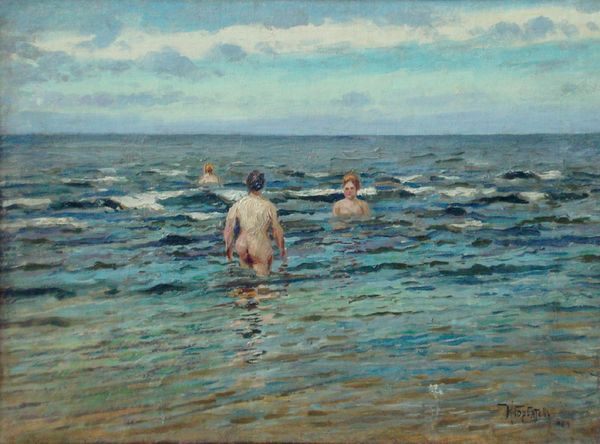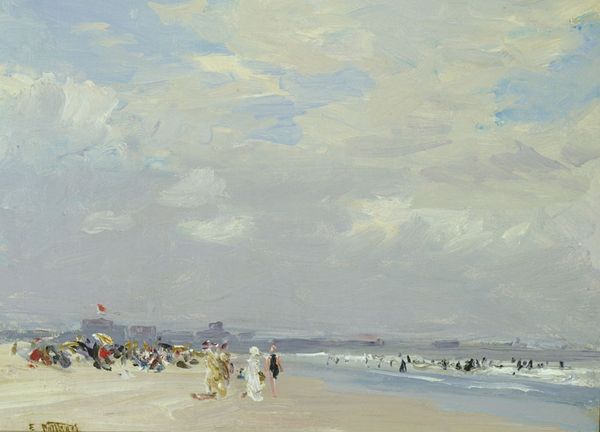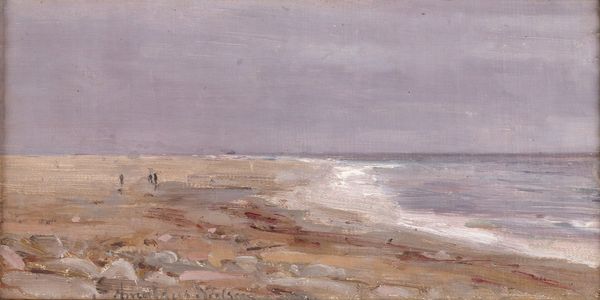
Copyright: Public domain
Editor: Krøyer’s "Summer Day on Skagen's Southern Beach," created in 1884, showcases a breezy beach scene. There’s something very serene and expansive about it. I'm curious, what visual elements stand out to you, and how do you interpret them? Curator: What commands my attention foremost is Krøyer’s masterful manipulation of light and color, the quintessential building blocks of pictorial space. Note the gradation of the cerulean sky as it descends towards the horizon, seamlessly merging with the aqueous expanse of the sea. How does the interplay of warm and cool tones inform your understanding of spatial depth here? Editor: I see how the lighter hues closer to the horizon give a sense of distance. What about the figures? Are they simply elements contributing to the landscape? Curator: Consider the figure positioned prominently on the shore. Its placement disrupts the uninterrupted horizontal lines. Krøyer uses her as a vertical anchor against which we experience the undulations of the beach itself, with its subtly changing textures. The repetition of these upright forms leads the eye rhythmically along the waterline, so the composition becomes ordered by her inclusion in it. Editor: That makes perfect sense! I hadn't considered how the solitary figure acted as a structural component. Curator: Exactly. This painting’s form creates its content: in its color and its carefully planned spatial organisation. What initially struck you as “serene” begins to emerge as an exercise in orchestrating visual experience through color, placement, and line. What do you think? Editor: I see what you mean! Focusing on the compositional elements really unveils a different level of intentionality. Thanks! Curator: Indeed, it encourages a more engaged viewership when one examines the relationships between an artwork’s various elements and structures.
Comments
No comments
Be the first to comment and join the conversation on the ultimate creative platform.
